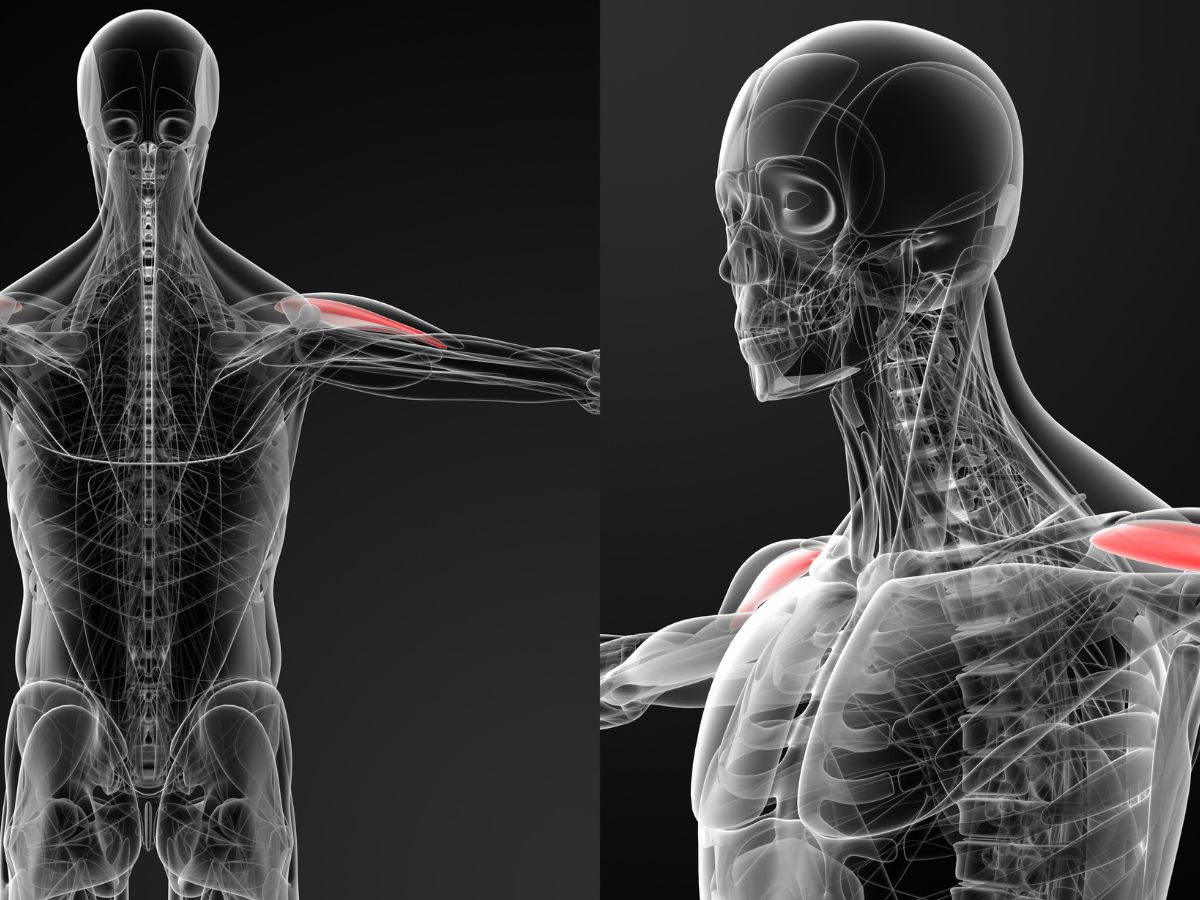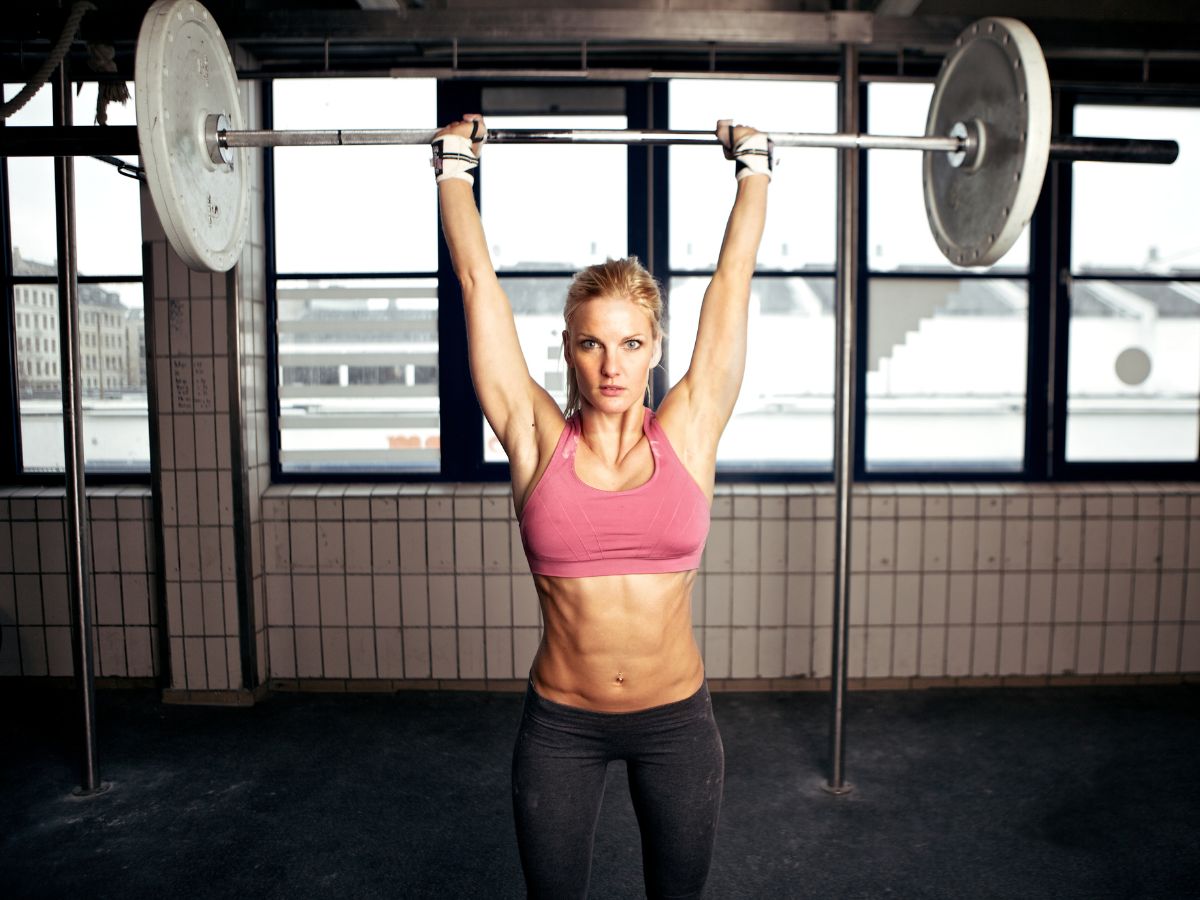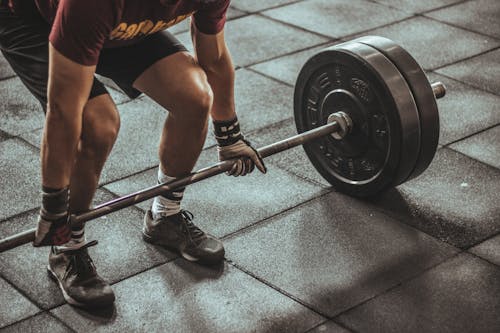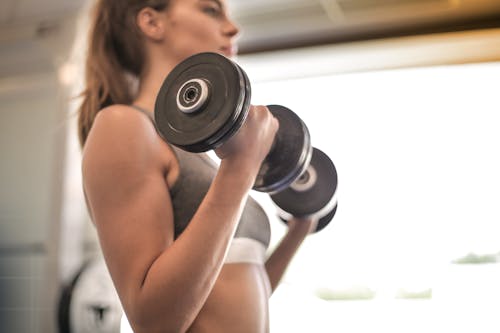Table of Contents
ToggleIntroduction:
An anterior deltoid workout targets the front part of the shoulder muscles, which are crucial for various upper-body movements. To effectively engage these muscles, it’s important to perform exercises that focus on shoulder flexion and stabilization. Common exercises include front raises, using either dumbbells or a barbell, which isolate the anterior deltoid workout. Push presses and shoulder presses also effectively work these muscles, especially when performed with controlled movements. Beginners should start with lighter weights to ensure proper form and avoid injury.
As strength and proficiency increase, gradually increasing the weight will further challenge and develop the anterior deltoid workout. Consistency and proper technique are key for effective muscle growth and strength improvement in this area. Always consider warming up before and cooling down after workouts to maintain shoulder health and flexibility.

Benefits of Anterior Deltoid Workout
Anterior deltoid workout has several benefits, as mentioned below:
Further developed Shoulder Feel:
The front deltoids are a key muscle bunch for making a balanced, stylishly satisfying shoulder. When created, they add to a more extensive, more characterized chest area, which is many times an objective for those hoping to work on their physical makeup.
Upgraded Chest area Strength:
Solid foremost deltoids contribute fundamentally to general chest area strength. They are engaged with different pushing developments, for example, the seat press or push-ups, and reinforcing them can prompt enhancements in these and other compound activities.
Better Utilitarian Execution:
The foremost deltoids assume a vital part in regular developments, including lifting items or performing undertakings that include pushing or arriving at above. Reinforcing these muscles can make day-to-day exercises more straightforward and lessen the gamble of injury.
Further developed Stance:
Solid foremost deltoids, when offset with the advancement of the center and back deltoids, can assist with keeping up with great shoulder arrangement and Stance. This is especially significant for people who invest a ton of energy in a work area or before a PC.
Injury Anticipation:
Fortifying the foremost deltoids, alongside other shoulder muscles, can give better steadiness to the shoulder joint. This expanded security is vital for forestalling wounds, particularly during chest area activities and sports that include tossing or swinging.
Upgraded Sports Execution:
Competitors who participate in sports that require chest area strength and development, like swimming, baseball, tennis, or b-ball, can profit from more grounded foremost deltoids. These muscles aid strong arm development and can upgrade general athletic execution.
Adjusted Muscle Improvement:
For those who participated in lifting weights or general wellness, working the front deltoids is fundamental for adjusted muscle improvement around the shoulder. This equilibrium is significant for style as well as for keeping up with appropriate muscle capability and arrangement.
Expanded Metabolic Rate:
Like any obstruction preparation, resolving the front deltoids can add to an expanded metabolic rate. Muscle tissue consumes more calories and is still contrasted with fat tissue, so expanding bulk can support the weight of the board.
5 Best Anterior Deltoid Workout Name
- Front Dumbbell Raises
- Arnold Press
- Push Press
- Incline Bench Front
- Plate Front Raises
Front Dumbbell Raises:

The front dumbbell raise is a neglected activity, frequently eclipsed by the above press and sidelong raise. In certain circles, it is even delegated pointless.
However, as you continued looking for enormous shoulders, disregarding the front raise is a mix-up. As a matter of fact, it very well may be fundamental for your shoulder routine whenever done accurately. Probably the best jocks ever, including Arnold, Dorian Yates, and Jay Cutler, depended on them.
How to do Front Dumbbell Raises?
Pick Suitable Loads: Begin with dumbbells you can lift without stressing. Utilizing lighter loads with appropriate structures than heavier loads with unfortunate forms is better.
Starting Position:
- Stand up, standing with your feet shoulder-width apart for security.
- Hold a dumbbell in each hand before your thighs, palms looking towards your body.
- Keep a slight curve in your elbows to forestall weight on the joints.
Lift the Loads:
- Breathe out and lift the hand weights before you, keeping your arms straight.
- Raise the loads to bear level.
- Guarantee the lift is controlled and comes from your shoulder muscles, not force.
Pause at the Top: Momentarily stop when the hand weights are at shoulder level. This respite can assist with expanding muscle commitment.
Lower the Loads: Breathe in as you gradually bring down the hand weights back to the beginning position. This descending development ought to be controlled to expand muscle commitment.
Reiteration: Rehash for the ideal number of reps. Regularly, 8-12 reps for 3-4 sets are normal in strength preparation.
Arnold Press:

The Arnold press raises a ruckus around the town tops of the deltoids, which can assist you with lifting more grounded with regards to different lifts and fabricates all the more balanced shoulders. The average and back deltoids frequently get ignored in other arm exercises like press-ups and seat presses, though the scope of movement in the Arnold press helps work every one of the three deltoid muscles uniformly.
A standing Arnold press likewise works your lower back muscles as your back attempts to settle your body as you move. A more grounded back can assist with working on your Stance and your exhibition during practices like deadlifts and columns.
How to do Arnold Press?
Starting Position: Sit on a seat with back help. Hold a dumbbell in each hand at shoulder level, with your palms confronting your body and elbows twisted.
Initial Rotation and Press: As you press the free weights up, turn your palms so they look ahead when the dumbbells are above. Your arms ought to expand completely at the top.
Top Position: At the highest point of development, your palms ought to confront away from you. Stop momentarily here.
Invert the Development: Lower the dumbbells back to bear level while at the same time pivoting your palms back towards you, getting back to the beginning position.
Redundancy: Rehash for the ideal number of reiterations. Normally, 8-12 reps for 3-4 sets are standard in a strength preparation routine.
Push Press

The push-press is an overhead-press variety where the free weight is pushed vertically with help from the lower body. This “push” assists the load with going through the staying point of a severe press. The push-press generally proceeds as a component of hand weight edifices, power preparing for a wide range of games, or as a strong shoulder workout.
How to do Push Press?
Starting Position: Stand with your feet shoulder-width separated. Hold a dumbbell at shoulder level with your hands right external to your shoulders. The bar ought to lay on the facade of your shoulders with elbows pointing forward.
Plunge: Start with a slight curve in your knees, plunging a few inches. This is a speedy, controlled plunge, not a profound squat.
Explosive Drive: Explosively Drive through your heels to fix your legs and expand your hips. Utilize this force to assist with squeezing the barbell overhead.
Press the Weight: As your legs expand, press the barbell straight up above until your arms are completely broadened.
Lockout: When your arms are completely broadened, and the bar is overhead, momentarily lock out your arms and settle the weight.
Get Back to Begin: Lower the bar back to the front of your shoulders, engrossing the load with a slight twist in your knees.
Redundancy: Reset your position and rehash for the ideal number of reiterations.
Incline Bench Front

The incline dumbbell front raise is a chest area practice focusing on the shoulders. Since it is performed face down on a calculated seat, it has a more prominent scope of movement than standing or upstanding situated raises and stirs things up around town from an alternate point. Raise varieties are typically performed for moderate to high reps, for example, 8-12 reps for each set or more, as a feature of chest area or shoulder-centered preparing.
How to do an Incline Bench Front?
Set Up the Incline Bench:
Change an incline bench to around 45 to 60 degrees. The point ought to be relatively steep; it’s barely sufficient to rest up against easily.
Choose Your Weights:
Select a couple of dumbbells that you can lift without stressing. It’s vital to begin with a weight that permits you to keep up with legitimate structure.
Starting Position:
Sit on the incline bench, resting back up against it. Hold a free weight in each hand with your arms hanging straight down and palms looking towards your body.
Performing the Activity:
Keeping your arms straight (however not locked), gradually raise the hand weights before you bear level. Your palms ought to remain confronting the ground.
Ensure your developments are controlled, and abstain from swinging the loads or utilizing force.
Bringing down the Loads:
Gradually lower the loads back to the beginning situation in a controlled way.
Redundancies:
Play out the ideal number of reiterations, commonly 8-12, for muscle building.
Structure and Wellbeing Tips:
Keep your back level against the seat all through the activity.
Abstain from angling your back or utilizing your lower body to lift the loads.
Center around utilizing your shoulder muscles, not your arms, to raise the loads.
Inhale out as you lift the loads and take in as you lower them.
Plate Front Raises:

The front plate raise is a front raise variety that moves the lifter to raise a weight plate from the hip level in a curve bearing until the arms are straight ahead and the plate is at shoulder level. Because of the state of the plate, a nonpartisan hold is utilized, where different varieties utilize a pronated grasp. The impartial grasp can give a more agreeable situation to the shoulder joint and may take into consideration a more noteworthy burden to be lifted.
This exercise requires a decent degree of center dependability and solidarity to guarantee the lower back isn’t put under excessive pressure. Guaranteeing the center is supported throughout the development likewise maintains the focal point of the development of the deltoids.
How to do Plate Front Raises?
Choosing the Plate:
Pick a weight plate that is suitable for your solidarity level. It’s essential to begin with a weight that permits you to keep up with great structure all through the activity.
Starting Position:
Stand with your feet shoulder-width separated for steadiness.
Hold the weight plate with two hands. Your hands ought to be on one or the other side of the plate, grasping it solidly.
Allow the plate to drape before your hips with your arms stretched out and elbows marginally twisted to keep away from joint strain.
Performing the Raise:
Keeping your back straight and center drawn in, gradually raise the plate before you to bear level. Your arms ought to stay expanded.
Guarantee your developments are controlled, zeroing in on lifting with your shoulder muscles as opposed to utilizing force.
Top of the Development:
When the plate arrives at shoulder level, stop momentarily.
Your body ought to stay fixed; try not to recline or involve your lower body to help with lifting the weight.
Bringing down the Plate:
Gradually lower the plate back to the beginning situation in a controlled way.
Your arms ought to stay stretched out all through the development.
Relaxing:
Breathe in as you bring down the weight, and breathe out as you lift.
Redundancies:
Play out the activity for the ideal number of redundancies, usually 8-12 reps for muscle assembling or conditioning.
FAQ:
Which deltoid is most important?
The Rear Delts are quite possibly the main muscle in the chest area. Anyway, a great many people disregard them, train them inaccurately, and don’t focus intently on them. We investigate exactly why they are so significant and why they ought to be a focal point of a large portion of your preparation sessions.
Does shoulder press hit deltoids?
The greatest promoter of the shoulder press is the front part of your shoulder muscle (foremost deltoid); however, you’ll likewise be sorting out your deltoids, rear arm muscles, trapezius, and pecs. In addition, your muscles will receive the rewards of the shoulder press.
How do you increase traps?
“Upright row” This is a famous activity for reinforcing the trapezius. You can likewise attempt this with dumbbells or a barbell in your grasp. Stand upright. With your clenched hands grasped, pull up your clenched hands as high as possible while twisting your elbows, keeping your hands near the front of your body.
Read More :



